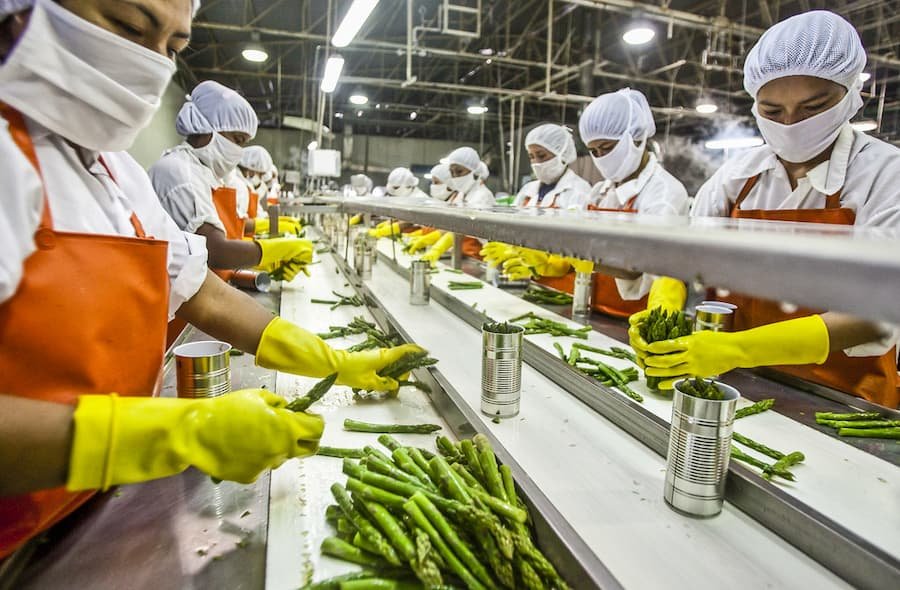Manufacturing costs are an important issue for manufacturers. They do not get paid for their services or products until they sell them to someone who has the need and ability to purchase what you have manufactured. As such, it is in your best interests to ensure that your manufacturing costs are minimized so that you can be more profitable.
Here are 9 ways to reduce your manufacturing costs.
Table of Contents
1. Reduce Factory Overheads
Manufacturing costs fall into two categories:
- direct labor
- materials and the cost of running a factory – which manufacturers refer to as factory overheads.
When attempting to cut costs, it’s crucial that you first reduce your manufacturing overheads as efficiently as possible before making any other changes elsewhere within the manufacturing process. In many cases, you can boost overall productivity by simply reducing manufacturing overheads without making any other changes. The fact remains that there are some common-sense things that business owners can do to reduce their manufacturing overhead expenses without incurring a substantial loss elsewhere within the company.
2. Develop a Thorough Understanding of Indirect Costs with Production
Many businesses fail to understand their indirect costs with production truly, and as a direct result, they incur high manufacturing overheads. A responsible business owner should ensure that they know their exact, full production costs – citing both the direct and indirect expenses incurred. Once you thoroughly understand these costs, it’s much easier to identify ways to save money on your manufacturing processes moving forward.
3. Seek Out Potential Employees who are More Qualified Than Yourself
One of the easiest ways to reduce manufacturing overheads is by ensuring that your workforce has sufficient qualifications for their roles within the company. By hiring workers who are already sufficiently skilled for various aspects of the job, you’ll find it very difficult to incur additional costs throughout your company’s manufacturing operations.
Suppose you cannot fill certain roles with existing staff. In that case, it may be wise to consider hiring external consultants (rather than full-time employees) who can play the role of ‘professional first aiders’, for example. This is one of several ways business owners can reduce their manufacturing overheads without sacrificing the quality or output of their company’s products and services.
4. Limit Your Use of Non-Reusable Materials
Business owners can reduce factory overhead expenses by limiting their use of non-reusable materials within the production process. Although this change will require you to make some initial investment in equipment capable of recycling various types of materials, you should find that these costs are recouped within a few years of introducing your recycling scheme. Furthermore, you’ll find that by reducing the amount of non-reusable materials used in your company’s manufacturing processes, it becomes much easier to cut costs elsewhere and boost overall productivity along the way.
5. Reduce Waste
It goes without saying that if you wish to reduce factory overhead expenses as much as possible, reducing waste is one of the first aspects you should look to address. Waste comes in many different forms – from excess raw materials and components to human resources spent unproductively during the production process – and business owners must identify all such wastage as quickly as possible. Taking steps towards eradicating unnecessary wastage throughout the entire production process makes it easier to cut needless expenses in the long run. The easiest way to identify waste and make improvements to your production lines is by introducing food manufacturing software into your business.
6. Enforce Strict Hiring Procedures When Recruiting New Employees
Another way in which you can reduce your manufacturing overheads is by ensuring that every member of staff hired for any given position has sufficient skills and knowledge for their role within the company. This might mean adopting far stricter hiring procedures than usual, but in the long run, it will prove highly worthwhile both for your company’s output and efficiency levels. Furthermore, by ensuring that all of your production line workers are sufficiently skilled for their positions, you’ll find that they can carry out tasks with minimal supervision – further boosting overall productivity wherever possible.
7. Consider Using Alternative Energy Sources Within Your Factory Space
Using alternative energy sources during the production process is one of the most efficient ways business owners can reduce factory overhead expenses. By switching to solar power or wind turbines, for example, you’ll essentially be able to generate your own electricity with no direct cost whatsoever – significantly reducing your overall annual expenditure. Although this change may require a large initial investment at first, it will more than pay for itself within a few years as your manufacturing overhead costs are drastically reduced moving forward.
8. Only Purchase the Parts and Components Necessary for Each Job
Purchasing only those parts and components necessary for any production line task is another highly effective way to reduce factory overhead costs without sacrificing output levels or quality control procedures. Suppose you’re currently supplying several different types of products within the same factory area, for example. In that case, you’ll likely find that streamlining your output and narrowing the focus to a single type of product will reduce your production line overhead expenses by at least 20% – even if it does mean you need to increase your initial investment into equipment and machinery accordingly.
9. Improve Communication Between Factory Floor Workers
One final way business owners can reduce their manufacturing overheads is by encouraging an effective level of cooperation between the various members of staff working on their company’s production lines. Implementing regular meetings between all employees – from those working within the warehouse to those responsible for helping customers – makes it much easier to identify problem areas or potential solutions. By instilling a sense of teamwork throughout your entire workforce, you’ll find that you’re able to improve your overall output levels and efficiency by several points – all without breaking the bank.
Read also: Creative Food Merchandising in Grocery Stores

